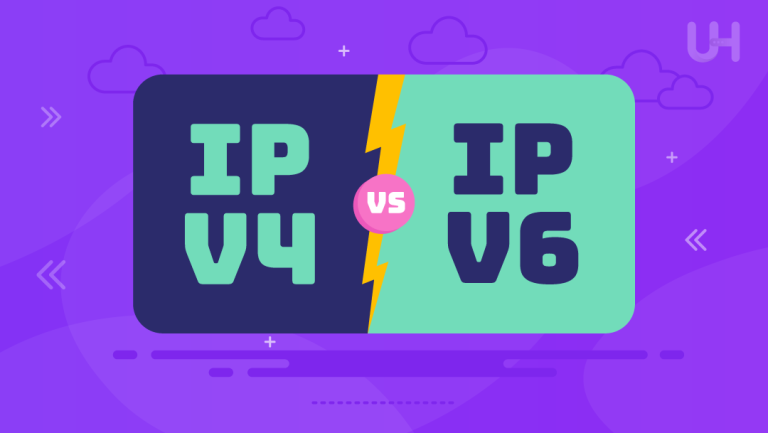Internet Protocol Television(IPTV) allows for greater flexibility as it delivers television services over broadband internet networks as opposed to traditional cable TV, enabling a person to watch their favorite shows, movies, and sports from anywhere in the world. IPTV incorporates live television, on-demand content, and interactivity all in one.
We will discuss the inner workings of IPTV, along with its revolutionary benefits, cons, and a step-by-step blueprint.
What is IPTV?
Television entertainment has seen technological innovations over the years, and IPTV is arguably the fastest evolving one, as it solves the very problem that conventional TV has of limited possibilities. It also features advanced content recommendations, multi-device access, and the ability to stream in HD and Ultra-High Definition. Furthermore, constantly evolving means of interaction and streaming uphold IPTV’s spot as a leader in smart entertainment solutions.
How Does IPTV Work?
Technical Overview
A conventional television signal receives broadcasting through the internet as a datastream of information. Additionally, an IPTV system has:
- Content Sources: These systems collect content from varying service providers which include TV channels, movies, and other forms of video content. Content can be licensed from third-party distributors, sourced directly from content creators, or sourced from broadcasters.
- Encoding: The video streamed over the internet must be compressed into formats compatible with IP addresses, such as MPEG-2, H.264, or the even newer H.265. Data and video files must be compressed to allow transfer at high speeds without loss of quality.
- Servers: These servers function to encode and then store video streams for distribution and playback. Furthermore, they guarantee that subscribers access the right channels and content with minimal to no delays or interruptions whatsoever.
- Middleware: Other software that works for other software is middleware, and in relation to IPTV, these manage the services. It also contains application programming interfaces, content management systems, and EPGs. CSM allows administrative users greater control over channels and interactivity which helps enhance customer satisfaction.
- Set-Top Box (STB): By means of an IPTV set-top box, the user is able to receive signals and decode IPTV content for viewing on television. These devices provide additional user functionalities like recording live broadcasts, and television pause, rewind, or fast-forward control increasing user control over broadcast television.
Ready to Experience IPTV with Blazing Speeds?
Dedicated IP servers give unparalleled speeds for streaming IPTVs and other media. Our advanced collection of dedicated servers with intended high speed peripheral configurations are specifically customized for IPTV.
Transmission Process
- Content Acquisition: IPTV service providers are fully responsible for acquiring content in multiple ways. They obtain sources from TV broadcasts of various television broadcasters, movies available from studios, and other content made available by different media creators. Every content asset is optimized for encoded transmission over IP networks or ISP Proxies to take advantage of unlimited bandwidth.
- Content Delivery: IPTV services can be provided in two primary ways:
- Multicast: IPTV providers can efficiently multicast live content to a great number of users utilizing a single stream through the VDS hosting service. Network resources are conserved through multicast as a protocol because it does not strain bandwidth by using more than one stream to serve the same content to numerous users. This serves live sports, news, or any other event that is widely consumed.
- Unicast: Individual-tailored streaming is provided for on-demand delivery. A system that allows users to receive specific streams which are customized based on their content access needs. Have specific movies, TV shows, or archived content made available for access at the user’s discretion. This retrieves content through a personalized approach granting users convenience.
User Experience
- Devices: IPTV can be accessed through a number of devices such as personal computers, tablets, and smartphones with IPTV applications. Specialized set-top boxes that are compatible with smart TVs also enable access. This flexibility means consumers can watch their preferred programs from any location with internet access.
- Features: Besides allowing users access to television programs, IPTV offers a number of interactive services for a smooth user experience.
- Time-Shifted TV: Viewers have the ability to pause live broadcasts, rewind, or fast forward to skip commercials. This flexibility over live programming enables viewers to control their schedules and increases user satisfaction.
- Video-on-Demand (VOD): Users can instantly stream an expansive selection of movies, TV shows, and other videos. Individual VOD services give the freedom of selection over specific content in the desired time thus meeting the preferences of users.
- Interactive TV Guides: Other programs can also be accessed using Electronic Program Guides (EPGs) which actively provide users with detailed information on programs currently running or scheduled to begin in short intervals. In addition to channel navigation, program scheduling is more user-friendly leading to an improved experience.
- Quality: IPTV services focus on High Definition (HD) and Ultra High Definition (UHD) video formats to further enhance the amazing quality and clarity they provide. The providers spend a lot on the network infrastructure and content delivery systems to enable seamless streaming with little to no buffering or interruptions which improves the viewer satisfaction tremendously.
IPTV Advantages and Disadvantages

Advantages of IPTV
- Anywhere Access: Television has become much easier with the introduction of the Internet and broadband networks because IPTV permits users to view content on smart televisions, computers, tablets, and smartphones which are highly portable. This allows people to watch their favorite movies and shows anywhere they desire so long as there is internet connectivity.
- Personalization: One of the biggest advantages of IPTV is the personalization aspect of the VOD feature that allows for personalization in the viewing experience. This allows complete flexibility in that users can choose only the sub-programs and channels that they are interested in watching thereby creating a personal viewing schedule.
- High Definition: IPTV ranks among the best, if not the best, television subscription services available in the market in terms of sound and video quality as well as the options offered in ultra high definition and high definition.
- Reliability: IPTV systems use an RDP server that guarantees a certain level of quality for each service offered. Unlike traditional services which cease functioning because of weather signals, storms, or satellite dish alignment issues, IPTV services are barely interrupted due to advanced infrastructure and transmission technologies.
- Subscription Savings: IPTV subscription services are more affordable compared to cable or satellite television subscriptions. It is common for models to have competitive pricing and different service packages which enables substantial savings on monthly entertainment expenses.
Disadvantages of IPTV
- Bandwidth Requirements: For IPTV, streaming HD and UHD content requires a dedicated, high-speed internet connection. Users can experience buffering delays or downgrade video quality during peak usage times due to network congestion.
- Quality Variability: Users of IPTV in areas with unstable internet speeds are most likely to experience problems with video quality. Buffers and layovers with slow resolution or high latency on the network, along with limits imposed by the provider, are likely also. Along with decreased resolution, lowered viewer satisfaction and content enjoyment also decrease.
- Geographical Limitations: Availability of certain channels, programs, and live streaming depends on the Copyright policies that often bind the content to regions. Rules and laws for content streaming often restrict it to a specific geography.
- Setup Complexity: The very first configuration of an IPTV system can be a cumbersome task for users who are not acquainted with peripheral network devices or links. Generally, IPTV applications require a router to be configured, applications and/or standalone boxes to be installed, as well as network testing to be performed.
Conclusion
The creation of adaptable and interactive ways of viewing television has been made possible by advances in broadband internet and IP technology, which has fundamentally changed the consumption of television through IP Television or IPTV. In comparison to television, IPTV delivers unparalleled control over entertainment by providing features such as content-encoding, infrastructure servers, on-demand IPTV streaming, and interactive program guides.
By using efficient multicast and unicast methods of transmission, IPTV ensures the delivery of high-definition content, enabling uninterrupted viewing on multiple devices.
Ultahost’s managed dedicated server hosting is ideal for dedicated IPTV customers who want high-quality streaming or clients looking for reliable IPTV services. We invite you to explore our managed dedicated server options tailored for seamless IPTV streaming.
FAQ
What is IPTV and how does it work?
IPTV delivers TV content over the internet using IP technology, allowing real-time streaming similar to traditional broadcasts.
What are the benefits of IPTV?
Benefits include access to a wide range of channels, on-demand content, higher quality, and flexibility across devices.
How can I access IPTV services?
Access IPTV through smart TVs, computers, smartphones, or dedicated IPTV set-top boxes with a stable internet connection.
What should I consider in an IPTV service provider?
Look for channel selection, video quality, support, pricing, device compatibility, and service reliability.
Can IPTV replace traditional cable or satellite TV?
IPTV can serve as an alternative, offering flexibility and on-demand options compared to traditional services.









